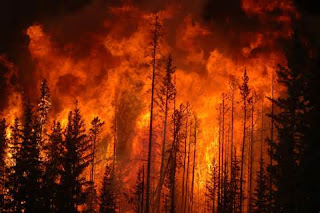El Nino, and its sister La Nina, have long been one of the key drivers of Australia's weather.
But environmental scientists now suspect they could be little more than the climactic equivalents of cheeky kids at the family barbecue. Instead, a "kindly aunty" and "cranky uncle" could have a far more wide reaching effect on our climate.
With El Nino being the Spanish for "the boy" and La Nina "the girl" scientists have named these overarching systems El Tio meaning, "the uncle," and La Tia "the aunt".
And if the boy and the uncle join forces, things may be about to get hairy. At the very least, you may want to slap on some more sunscreen, reports News.com.au.
Dr
Benjamin Henly, a climate scientist at the University of Melbourne,
told news.com.au a prolonged La Tia may have "lulled us into a false
sense of security" that global warming had slowed when the reality is
climate change could be on the verge of accelerating.
That could spell disaster for the 2015 Paris Climate Agreement which aimed to keep the world's average annual temperatures to 1.5C below pre industrial levels.
The El Nino Southern Oscillation (ENSO) is a climate cycle operating in the Pacific.
A negative ENSO phase, commonly known as an El Nino, sends hotter weather to Australia and can lead to less rain, sustained droughts and weather extremes. A positive ENSO, La Nina, sees cooler conditions and more rain.
Seven out of the 10 driest Australian summers have coincided with El Nino, including 2016 which was the hottest year on record.
http://www.nzherald.co.nz/world/news/article.cfm?c_id=2&objectid=11855216
But environmental scientists now suspect they could be little more than the climactic equivalents of cheeky kids at the family barbecue. Instead, a "kindly aunty" and "cranky uncle" could have a far more wide reaching effect on our climate.
With El Nino being the Spanish for "the boy" and La Nina "the girl" scientists have named these overarching systems El Tio meaning, "the uncle," and La Tia "the aunt".
And if the boy and the uncle join forces, things may be about to get hairy. At the very least, you may want to slap on some more sunscreen, reports News.com.au.
That could spell disaster for the 2015 Paris Climate Agreement which aimed to keep the world's average annual temperatures to 1.5C below pre industrial levels.
The El Nino Southern Oscillation (ENSO) is a climate cycle operating in the Pacific.
A negative ENSO phase, commonly known as an El Nino, sends hotter weather to Australia and can lead to less rain, sustained droughts and weather extremes. A positive ENSO, La Nina, sees cooler conditions and more rain.
Seven out of the 10 driest Australian summers have coincided with El Nino, including 2016 which was the hottest year on record.
http://www.nzherald.co.nz/world/news/article.cfm?c_id=2&objectid=11855216

No comments:
Post a Comment